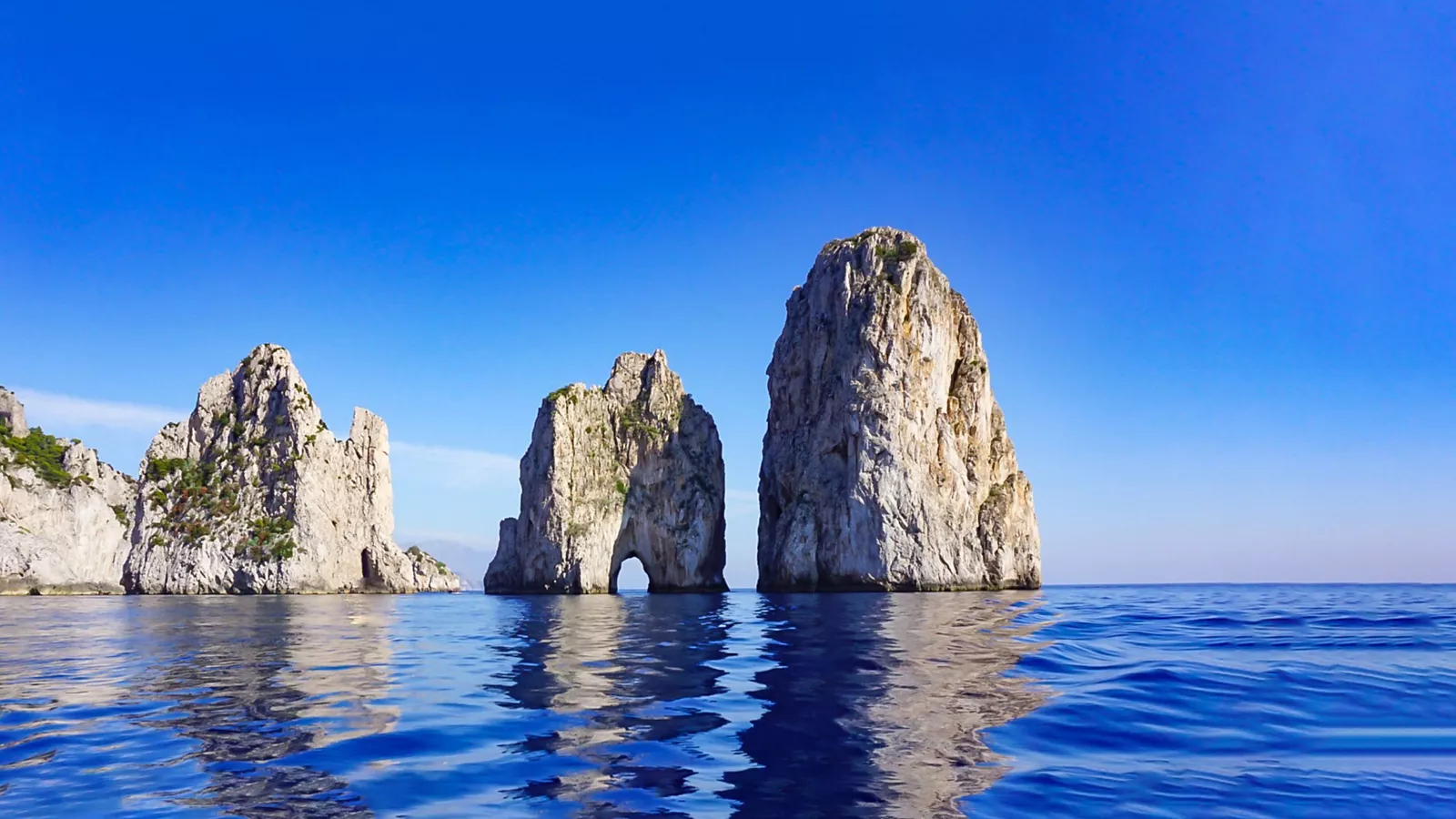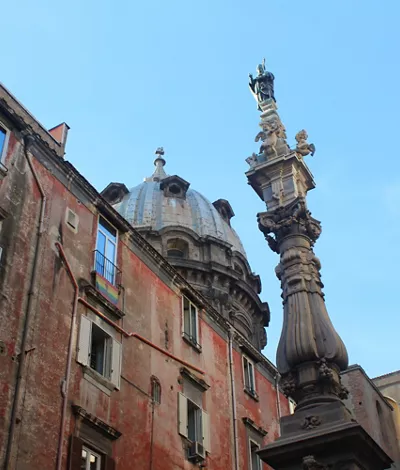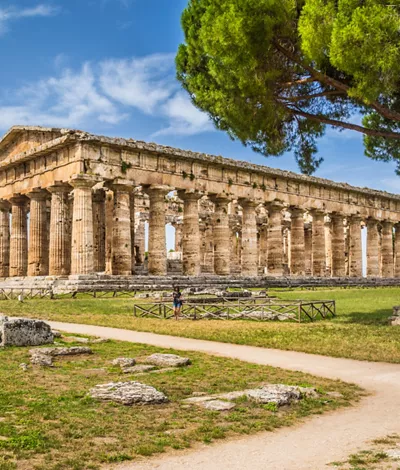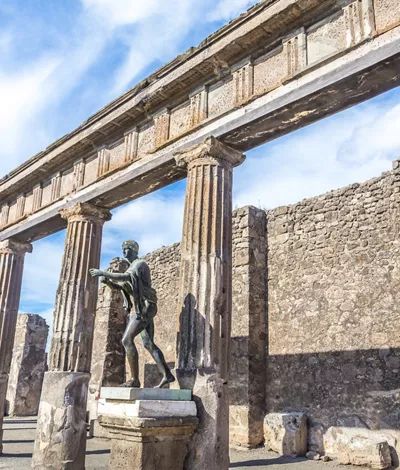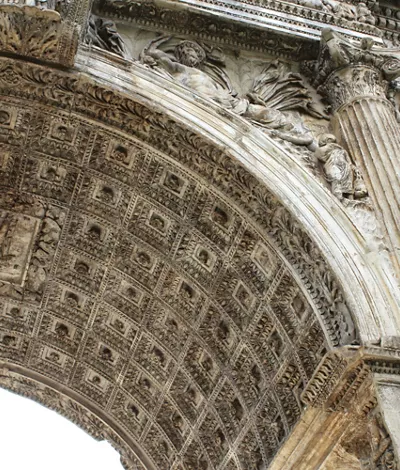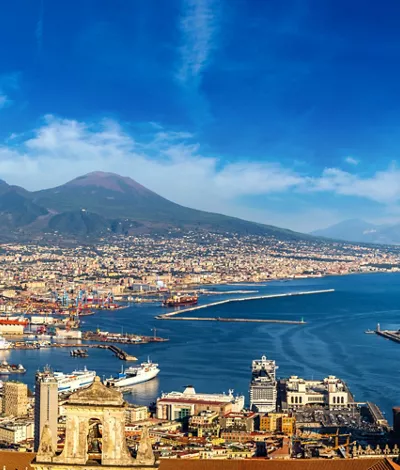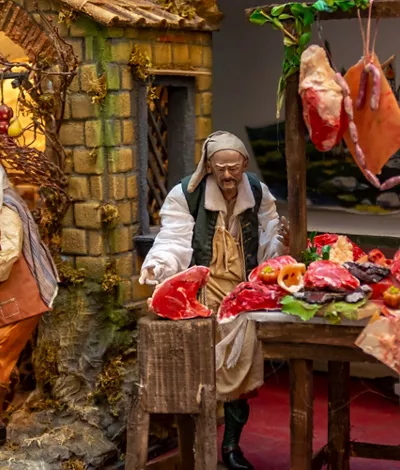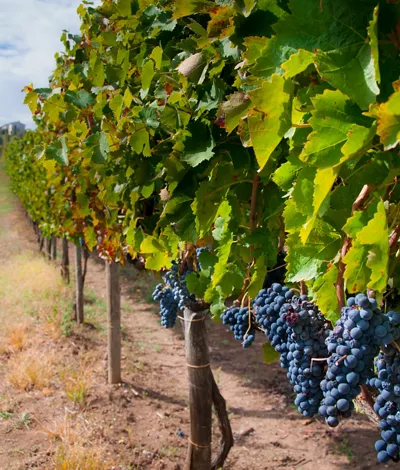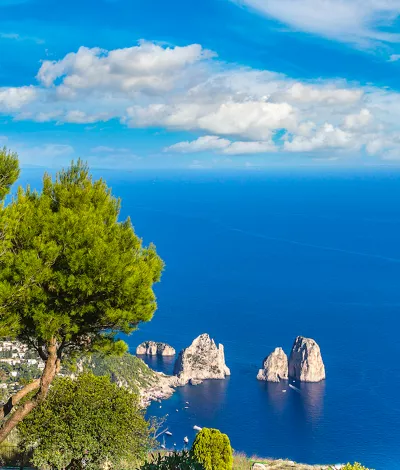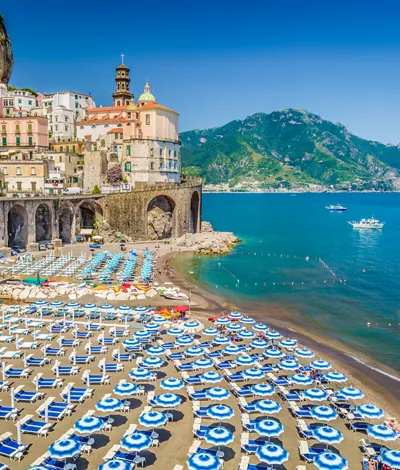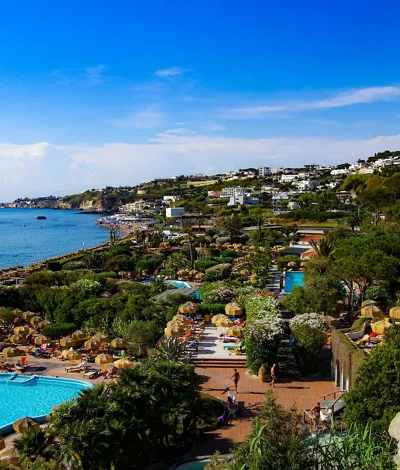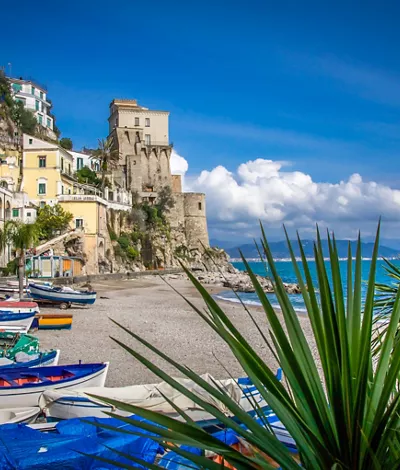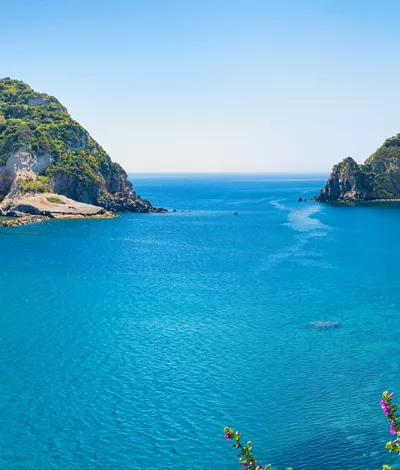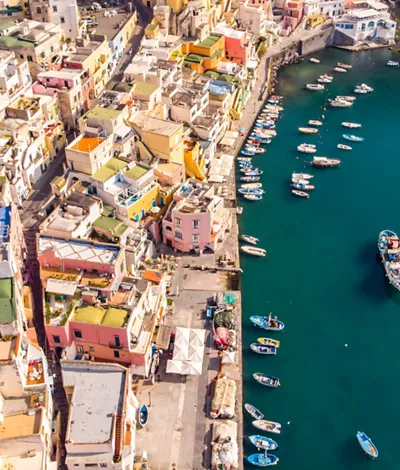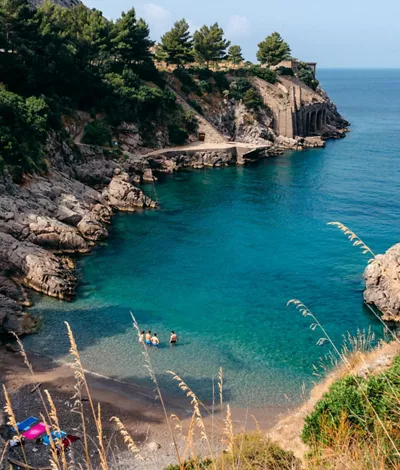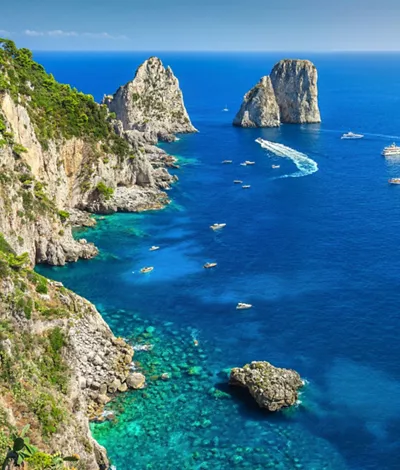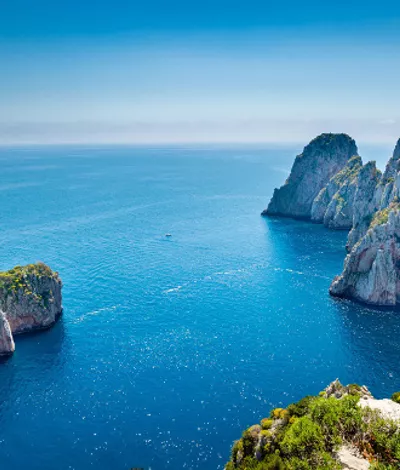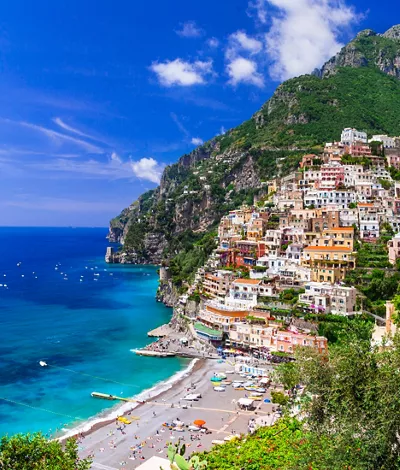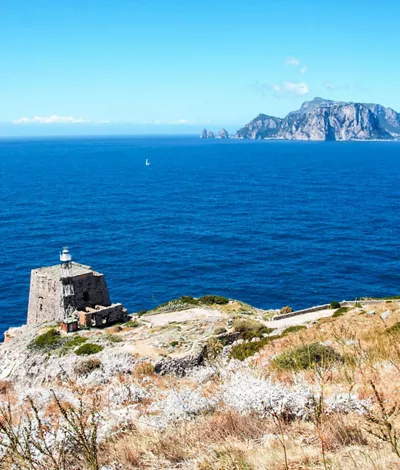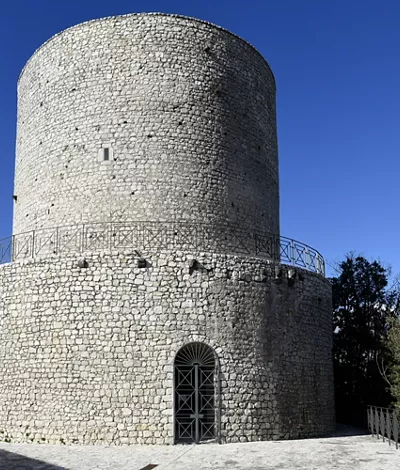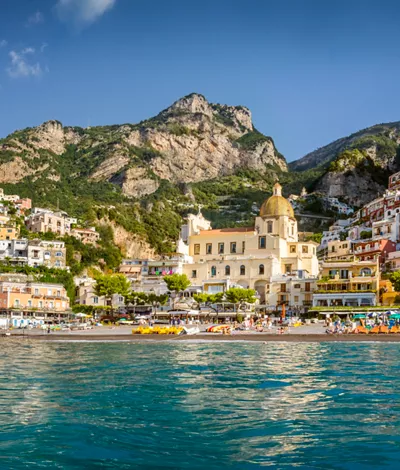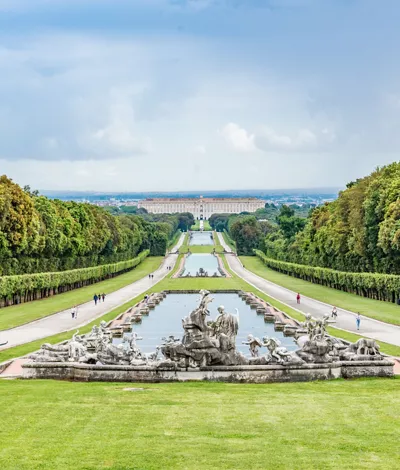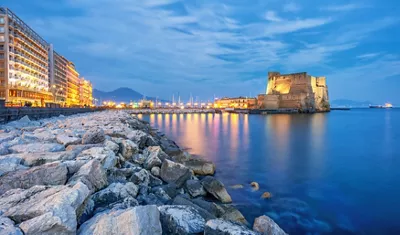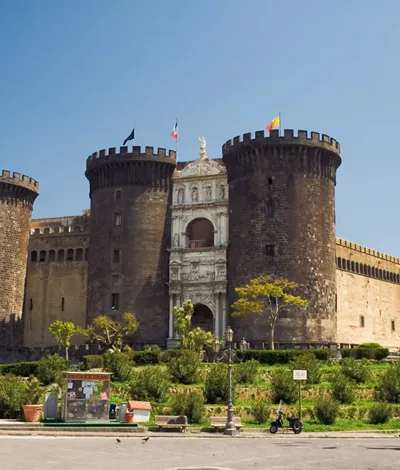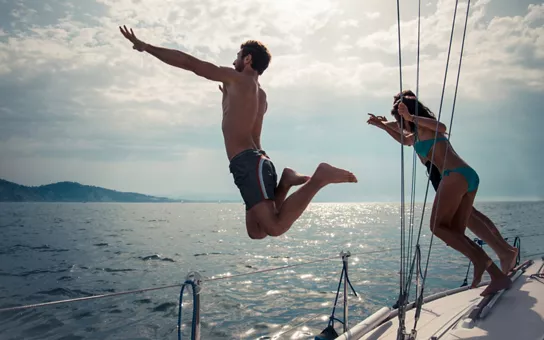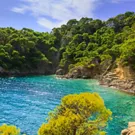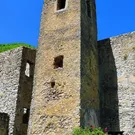Campania offers landscapes, history, culture and a gastronomic tradition that the whole world envies
A consistently mild climate, lush nature framing breathtaking landscapes, unspoilt villages and fairy-tale coastlines: this is Campania, a region that sums up centuries of cultures, between West and East, in a single Mediterranean jewel known for its unparalleled hospitality. A destination for the soul, the eyes and the palate.
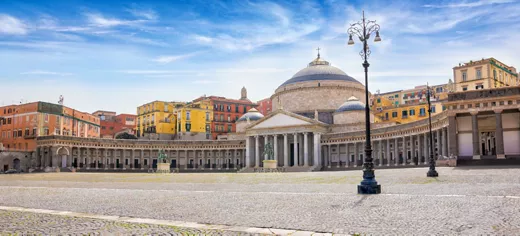
Naples
From its charming waterfront under the shadow of Vesuvius, to its beautiful and bustling historic centre: Naples is a stunning city. Its position as a meeting place for various peoples since ancient times has had a profound impact on Naples, making it a cultural hub. This is evident when walking through its streets, full of artistic and architectural treasures. It is a city with a unique magic, blossoming with natural attractions. From amazing food to all kinds of entertainment, you will never be bored.
Discover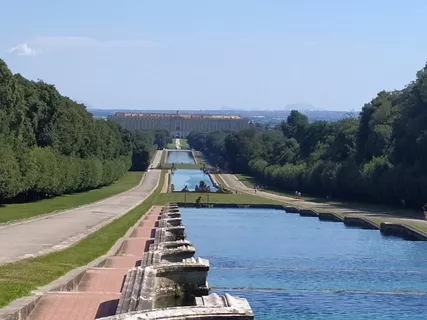
Caserta
Discovering Bourbon splendour just outside Naples The province of Caserta should be discovered and savoured starting with one of the masterpieces of Italian Baroque: the magnificent Royal Palace, built by Charles III of Bourbon on the outskirts of Naples. Here, you can spend an entire day strolling through the huge park surrounding the main building, amidst a manicured English garden and fountains that will leave you speechless. A visit to the Royal Apartments, starting with the imposing Scalone d'Onore often used as a TV and film set, is a magical experience. Another obligatory stop for those wishing to discover this area is the medieval village of Casertavecchia with its alleyways full of charm and history, restaurants for you to sit down and enjoy local delicacies and panoramic terraces from which you can take unique photographs. Near Caserta, you can also admire one of the most ingenious structures from the Bourbon era: the aqueduct built by Luigi Vanvitelli to supply water to the entire city and its surroundings. In Santa Maria Capua Vetere you can take a step back in time and stroll through the well-preserved remains of the Campano Amphitheatre, built when the Western Roman Empire was at its peak.
Discover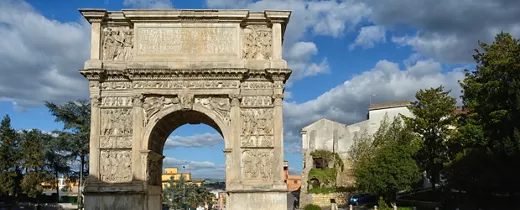
Benevento
Benevento is a beautiful but complex city, founded thousands of years ago in the hinterland of what is now the region of Campania, more than 60 km from Naples. Nowadays, all things considered, from most parts of Italy it is easier to get to the reserve by high-speed train than by plane or motorway. If you're looking for answers about the complex configuration of the city, with all its narrow alleys, irregularly-shaped squares, Roman stones and Baroque palaces built over the centuries - then the best place to start is the Sannio Museum, which traces an outline of the region's history. But if that sounds a bit full-on, why not enjoy a stroll around the streets first, before entering the museum. One of the most popular places for a peaceful stroll is Corso Garibaldi, a large and much-loved main street which certainly has its fair share of shops, the church of St Sophia in the centre, the Rocca dei Rectori at the end of the street and the Arch of Trajan at the end of a short side street. But perhaps the town's pride and joy is Caffè Strega. Inside, the walls are adorned with posters of ladies in flowing garments (perhaps witches?), there are tables for chatting or even studying (Benevento is also an important university town), as well as rows of the town's famous liqueur. There is more, of course: the Duomo itself, or the modern art installation by Mimmo Paladino, near the Sannio Museum. Another point to note is that according to legend, Benevento was founded by a Greek, Diomedes, a wandering veteran of the Trojan War. But let's not go over the top. Sleeping dogs (and Greek heroes) are best left to lie!
Discover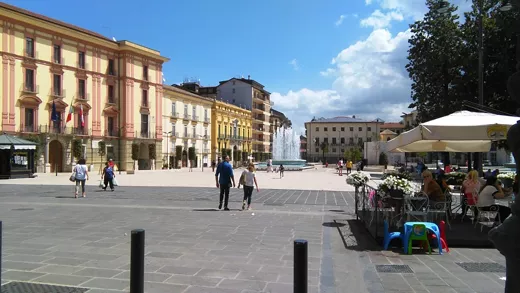
Avellino
Nature, art and faith in green Irpinia In the pristine nature of Irpinia, tranquillity, beauty and itineraries intertwine, between art, faith and nature. The Avellino basin is framed by the Monti Picentini mountains and dotted with castles, abbeys and villages to explore, including the beautiful village of Monteverde. The Serino forests are the perfect backdrop for a picnic. Nature lovers can immerse themselves in the Lake Conza Oasis, explore Caliendo Cave or be enchanted by the Calabritto Waterfalls. In Avellino, you can admire Piazza della Libertà, with the Bishop’s Palace, and discover the 36-metre-high Clock Tower and the majestic cathedral dedicated to St Mary of the Assumption and St Modestinus. Foodwise, you can enjoy gnocchi, bean and chestnut soup, caciocavallo cheese, stuffed peppers and local wines: Taurasi, Greco di Tufo and Fiano di Avellino. The heart of religious tourism in the area is the Montevergine Sanctuary, a monastic complex built in 1126 at an altitude of 1,270 metres. It is accessible on foot from Ospedaletto d’Alpinolo or by cable car from Mercogliano. Another splendid monastic complex is the Abbey of San Guglielmo al Goleto in Sant’Angelo dei Lombardi. Towering over the valleys, the Lombard-built castle of Avella and the Norman Castle of Ariano Irpino offer an insight into the past. The medieval castle of Rocca San Felice is associated with the legend of Margaret of Austria’s ghost, which roams there under a full moon.
Discover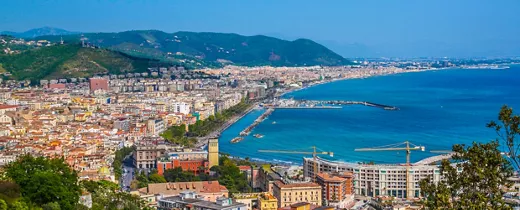
Salerno
Nature and history nestled between the sea and the mountains Overlooking the Tyrrhenian Sea, the province of Salerno boasts some of the most popular and visited tourist destinations in Italy. The historical centre of the capital, restored after the damage caused by the 1980 earthquake, preserves its original medieval structure intact, the best example of which is the Cathedral, built by the Norman prince Robert Guiscard. Stop, too, at the Church of the Annunziata with its beautiful Baroque bell tower, the Arechi Castle, the Church of S. Pietro a Corte and Piazza Flavio Gioia, known as the Rotonda because of its characteristic shape on which Porta Nova opens,monumental gateway rebuilt in the 18th century. There is no shortage of green spaces in the city, such as the Mercatello park, the Pinocchio park for children and the Minerva Gardens. The Salerno coast is dotted with unmissable villages. Amalfi, Positano, Maiori and Minori, Vietri sul Mare are just some of the towns where you can enjoy clear sea, breathtaking views and culinary delights. A compulsory stop at the archaeological area of Paestum to discover the majestic Greek temples, perfectly preserved. Trekking and nature lovers cannot fail to be enchanted by the Path of the Gods a scenic route from Agerola to Positano, and the natural beauty of the Cilento National Park, Vallo di Diano e Alburni.
Discover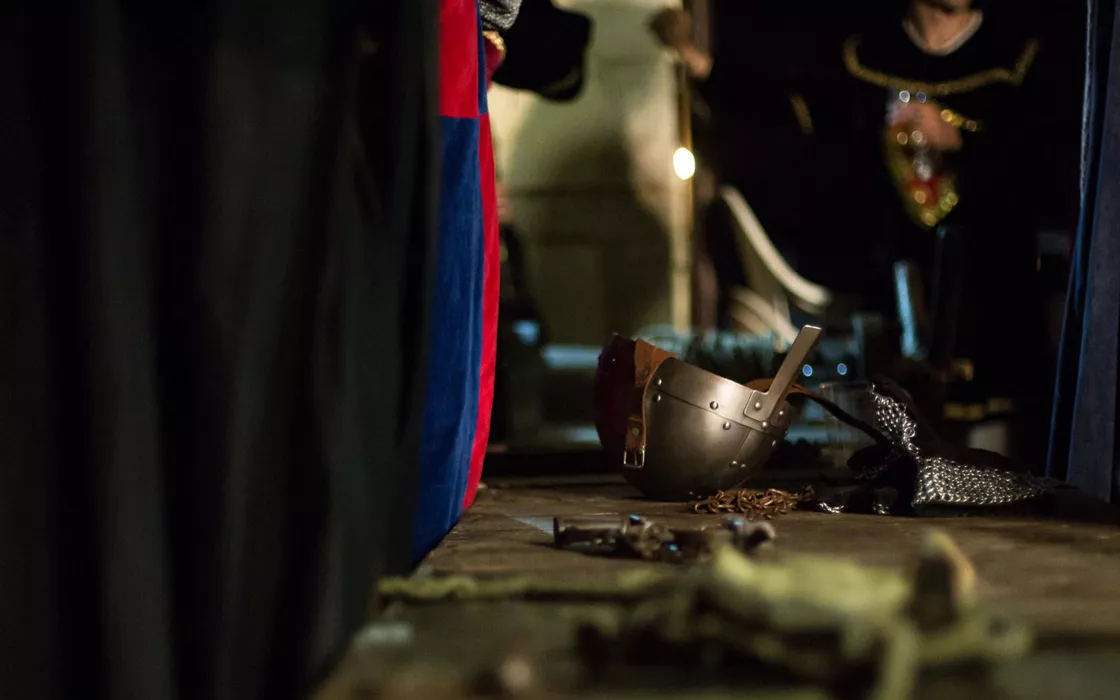
Comicon Naples: the most important network of pop events in Italy

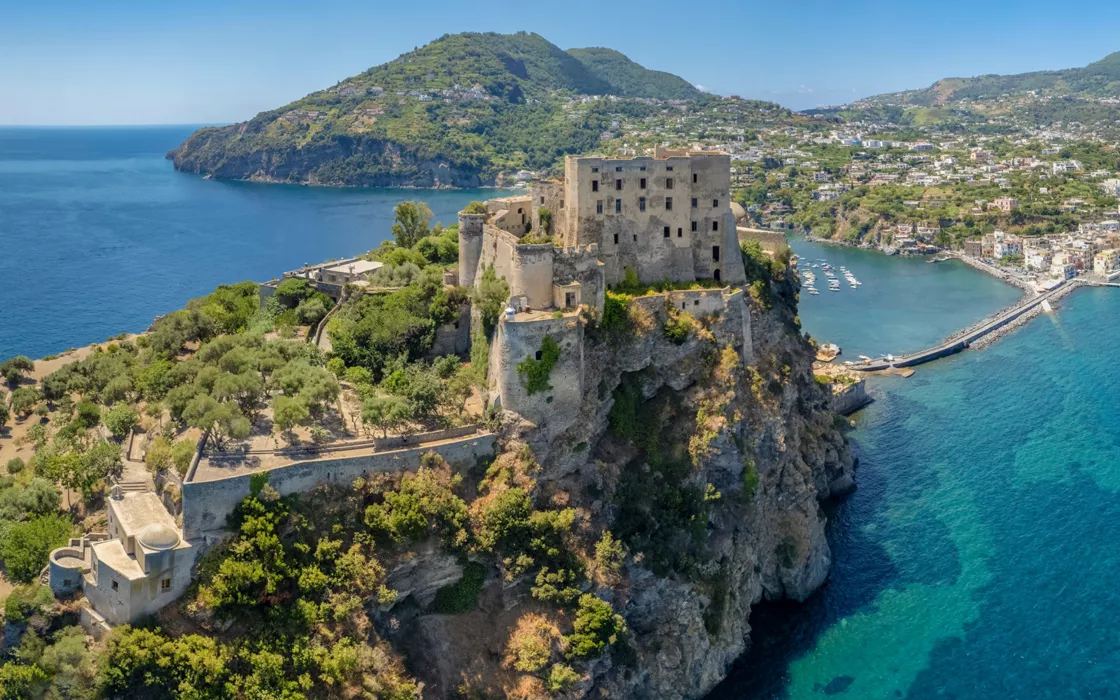

Ischia, the island of wellbeing among thermal gardens and natural springs
Learn more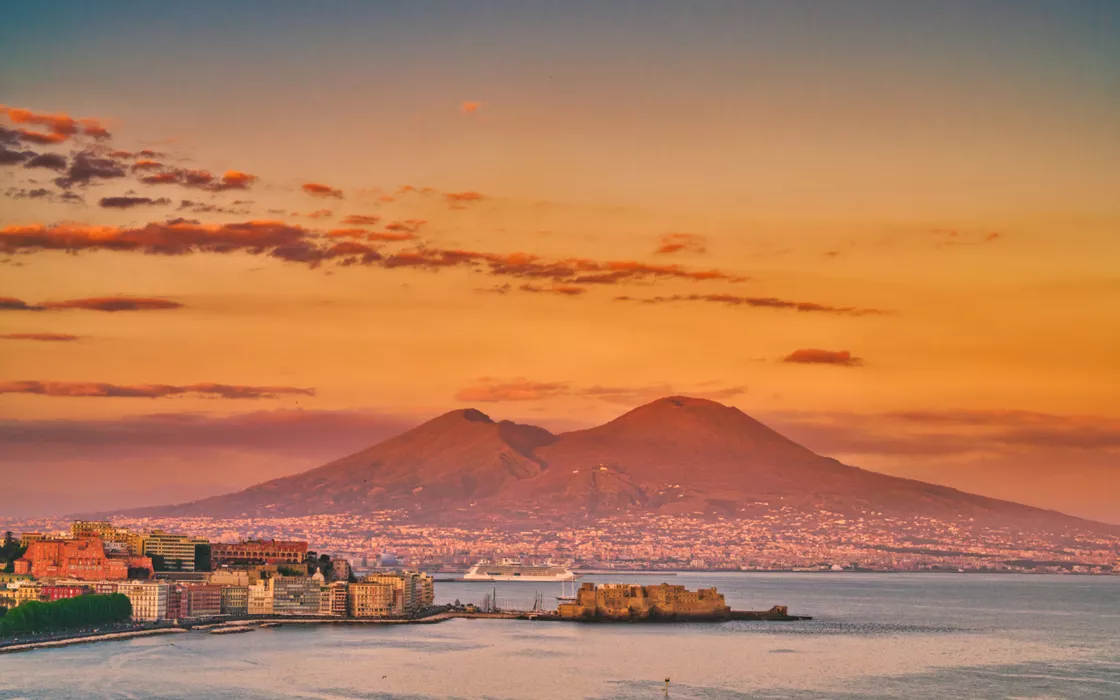
7 places to visit in Naples and its surroundings where they filmed the TV series The Sea Beyond
Learn more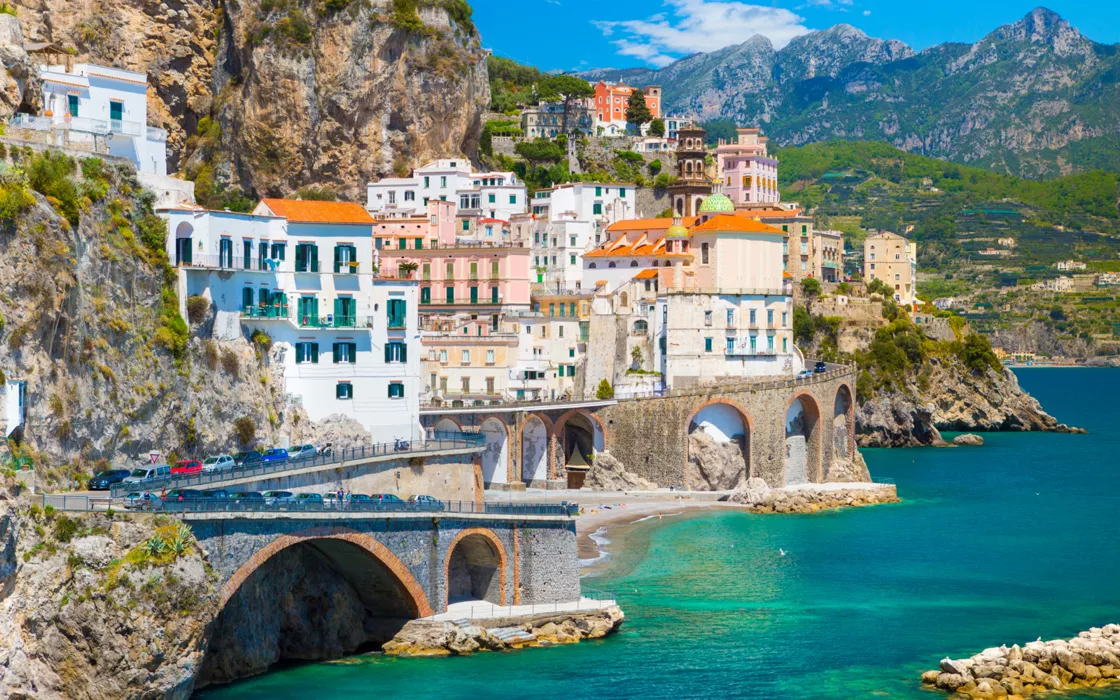
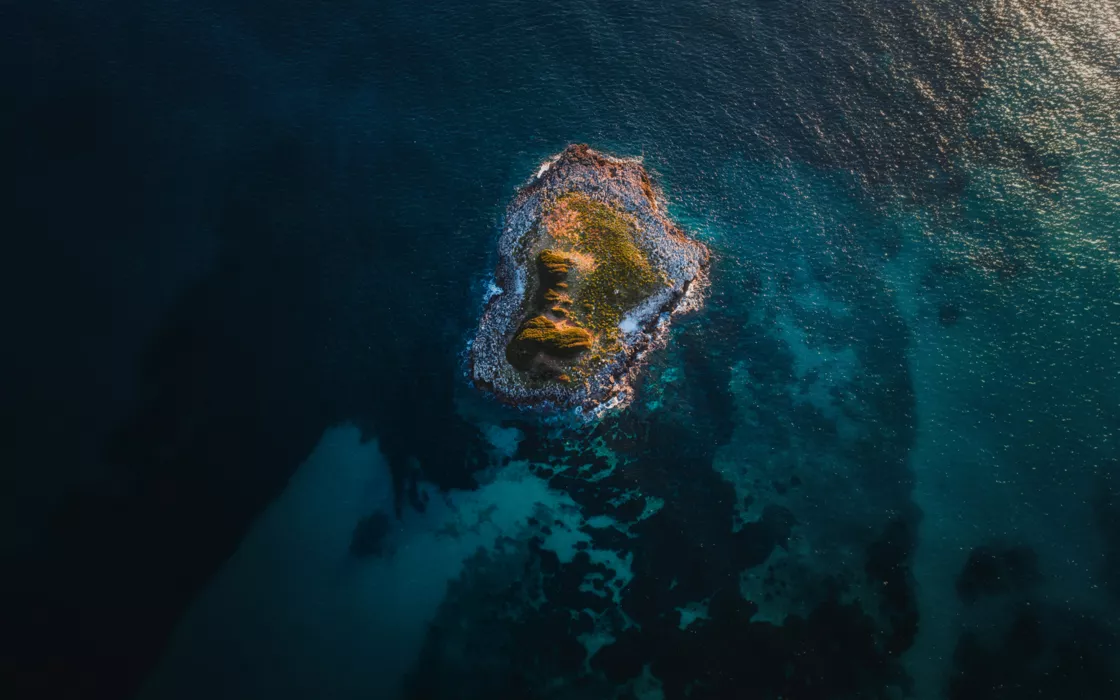

The Via Silente by bike, from Castelnuovo Cilento to Pollica in the Cilento National Park
Learn morePostcard-perfect sea and dizzying flavours
The sea of the Amalfi Coast and the Faraglioni of Capri, the joie de vivre of Naples, the lemon and orange blossom gardens of Sorrento, the magnificence of the Royal Palace of Caserta, the charm of the past that returns in Paestum, Herculaneum, Pompeii: are you ready to be seduced by Campania?
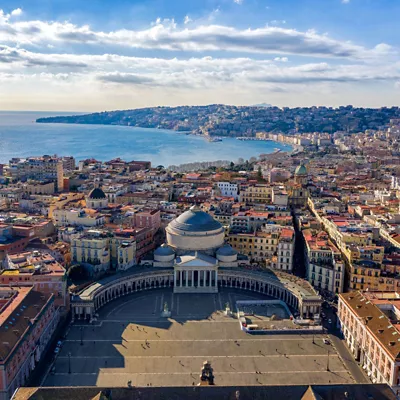

Continue living like an Italian
Subscribe to the Newsletter so as not to miss places, events and experiences for experiencing the best side of Italy: the authentic one.

Keep up to date
Would you like to learn about the most authentic experiences to be had in Italy, stay up to date on the most interesting events, discover our special offers and receive lots of insider hints and tips?


